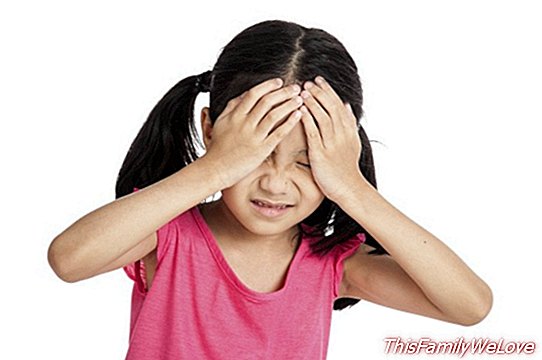How to relieve pain in children? Keys and analgesics

What do you it hurt your son? What kind of pain is? These are two basic and very important questions: how to deal with pain when it appears in the youngest of the house will depend on its response. Sometimes our children alert us to certain pains in their body and we do not know how to react. In these situations, it is best to have clear the following tips of the Spanish Association of Pediatrics in Attention Tempran, AEPED.
The key questions when our children feel pain
- How much does it hurt? This question is difficult to answer, especially when children are very young. In these cases, doctors and nurses use scales that help to evaluate it: mild, moderate and intense.
- What kind of pain is it? Pediatricians differentiate two essential types of pain: one that is due to inflammation and the other types of pain. Inflammation is that which occurs after bumps and very often in throat or ear infections.
What to do at home in the face of children's pain
Given the pain of children many times we can use medicines. These drugs to treat pain are called analgesics and some of them are also used to treat fever.
The analgesics that we have at home are usually the most common, that is, paracetamol and ibuprofen. These drugs are well known and most parents are used to use them to treat your children's fever.
When the child has pain and we want to give him an analgesic, normally we will have to administer the same dose used to lower the fever. Of course, we must bear in mind that the effect is not immediate. "You have to give time", explain the pediatricians, who clarify that analgesics take around 20 or 30 minutes to begin to take effect and reach their maximum action point 1-2 hours after ingestion.
What happens if we give him medicine and pain it does not stop? It is a recurring question among parents. In these cases, pediatricians ask to consult with them, because they are the right people to try to find out the cause and assess whether the child needs a different painkiller or increase the dose.
Should we wait to treat pain in children?
"The false belief that treating pain can mask a serious illness is widespread," say pediatricians, who recall at this point that, as with fever, "administering an analgesic is not going to hinder the diagnosis of the child's illness, not even a appendicitis"What's more, a child who feels pain usually lets himself explore worse and collaborates less precisely because it hurts.
In this sense, pediatricians make a recommendation: improve the child's condition with the analgesic and, once the pain subsides, visit (if necessary) the pediatrician to know the origin of it and, in this way, be able to cure it. "Do not forget that pain is an unpleasant experience and causes suffering," they say.
Do analgesics have side effects?
It's normal for parents to worry about the side effects of the medicines that we give to our children. Analgesics, like other drugs, can also produce undesirable effects. How to avoid them? The pediatricians explain that the best way to avoid the appearance of these adverse reactions is to pay attention to all follow the indications given by the child's doctor (especially as regards the amount and interval between taking and taking).
A reassuring fact: the two most commonly used drugs to treat pain (paracetamol and ibuprofen) "are well tolerated for children. "In fact, if the proper dose is given" the side effects are rare. "
Of these two drugs, paracetamol is the safer, according to the experts. This is because ibuprofen, on occasion, can cause discomfort in the stomach, nausea and vomiting, which makes it less suitable for these times. That is, if the child has vomiting or abdominal pain, better opt for acetaminophen.
And an insistence to finish: although these drugs are safe and have only secondary symptoms, you should never abuse of medication: they should only be used when they are necessary.
Damián Montero




